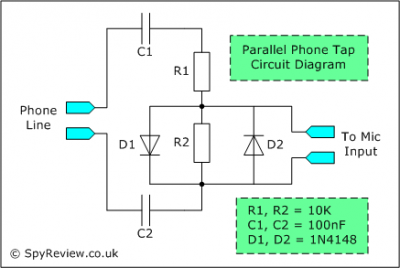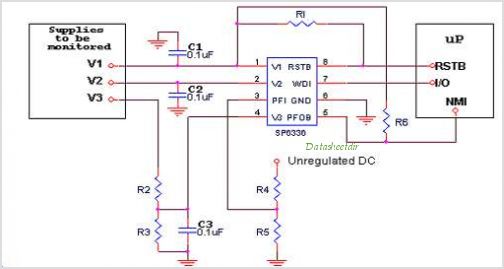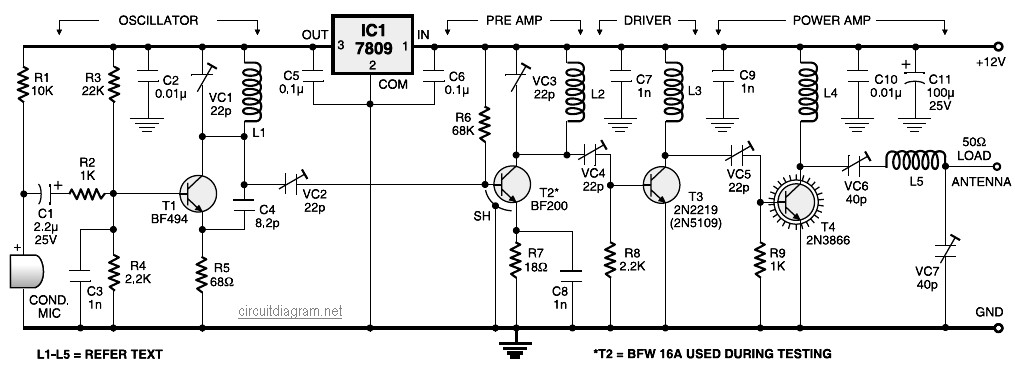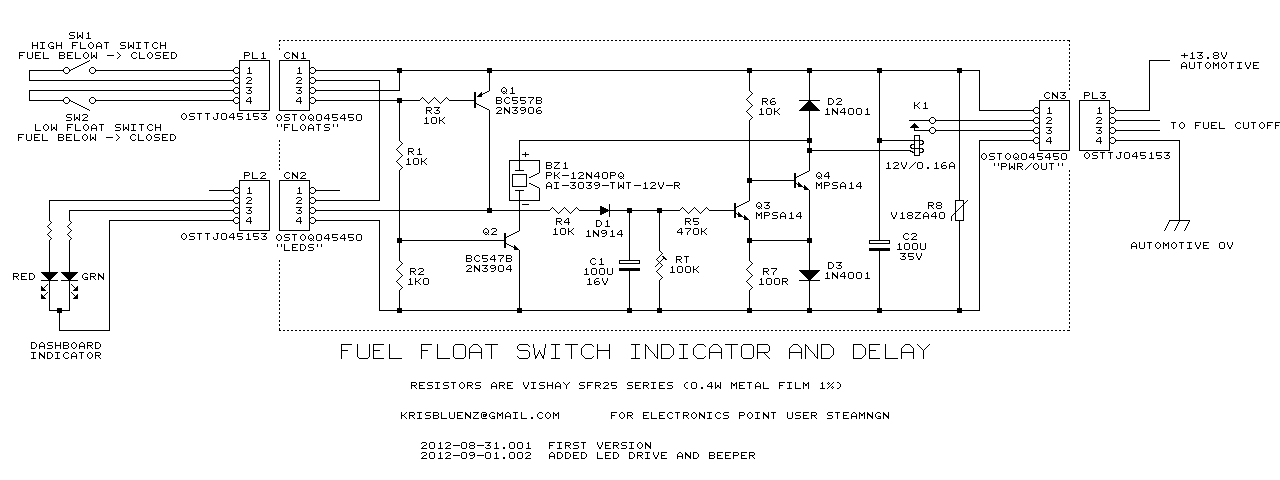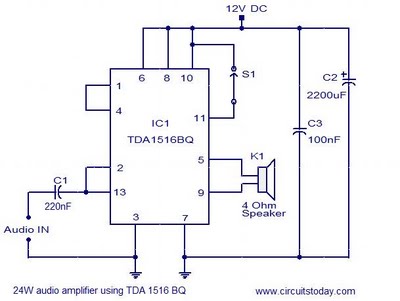
2 phone Intercom circuit diagram which can be used upto 1km in outdoor using ringer
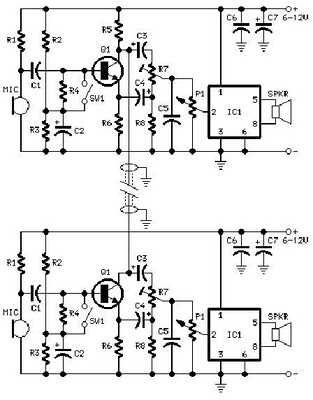
A project is proposed to construct a two-phone intercom system capable of functioning over a distance of up to 1 kilometer. The system will utilize the speaker of each phone to produce a ringing sound on the other end.
The design of a two-phone intercom system for long-distance communication requires careful consideration of several key components and principles. The intercom will primarily consist of two main units, each incorporating a speaker and a microphone, along with a power supply and transmission circuitry.
To achieve a communication range of 1 kilometer, the system may leverage radio frequency (RF) transmission. Each phone unit will be equipped with an RF transmitter and receiver module. These modules will convert audio signals from the microphone into RF signals for transmission and vice versa for reception. A popular choice for such applications is the use of 433 MHz RF modules, which can effectively cover distances of up to 1 kilometer under optimal conditions.
The audio processing will involve amplifying the microphone input to ensure clear sound transmission. An operational amplifier can be used for this purpose, boosting the signal before it is modulated onto the RF carrier wave. Additionally, a low-pass filter may be implemented to eliminate high-frequency noise from the audio signal.
On the receiving end, the RF receiver will demodulate the incoming RF signals back into audio signals. This audio signal will then be sent to the speaker, which will reproduce the sound. A similar amplification stage may be required to drive the speaker adequately, ensuring that the ringing sound is audible.
Power supply considerations are also critical for the intercom system, especially if portability is desired. Battery-powered options can be considered, with appropriate voltage regulators to ensure stable operation of the RF modules and audio circuitry.
In summary, the two-phone intercom system will consist of RF transmission and reception modules, audio processing circuitry for amplification, and a power supply system. This combination will facilitate effective communication over distances of up to 1 kilometer, utilizing the inherent audio capabilities of the phones involved.I want to build a 2 phone intercom which can be used upto 1km using speaker of same phone to create ring on other side please help.. 🔗 External reference
The design of a two-phone intercom system for long-distance communication requires careful consideration of several key components and principles. The intercom will primarily consist of two main units, each incorporating a speaker and a microphone, along with a power supply and transmission circuitry.
To achieve a communication range of 1 kilometer, the system may leverage radio frequency (RF) transmission. Each phone unit will be equipped with an RF transmitter and receiver module. These modules will convert audio signals from the microphone into RF signals for transmission and vice versa for reception. A popular choice for such applications is the use of 433 MHz RF modules, which can effectively cover distances of up to 1 kilometer under optimal conditions.
The audio processing will involve amplifying the microphone input to ensure clear sound transmission. An operational amplifier can be used for this purpose, boosting the signal before it is modulated onto the RF carrier wave. Additionally, a low-pass filter may be implemented to eliminate high-frequency noise from the audio signal.
On the receiving end, the RF receiver will demodulate the incoming RF signals back into audio signals. This audio signal will then be sent to the speaker, which will reproduce the sound. A similar amplification stage may be required to drive the speaker adequately, ensuring that the ringing sound is audible.
Power supply considerations are also critical for the intercom system, especially if portability is desired. Battery-powered options can be considered, with appropriate voltage regulators to ensure stable operation of the RF modules and audio circuitry.
In summary, the two-phone intercom system will consist of RF transmission and reception modules, audio processing circuitry for amplification, and a power supply system. This combination will facilitate effective communication over distances of up to 1 kilometer, utilizing the inherent audio capabilities of the phones involved.I want to build a 2 phone intercom which can be used upto 1km using speaker of same phone to create ring on other side please help.. 🔗 External reference

